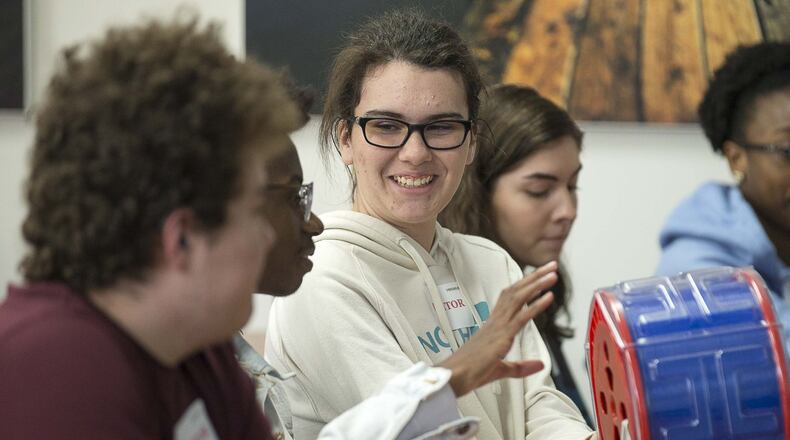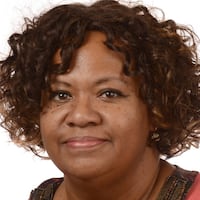With so many choices available, students often have a tough time narrowing down career paths. Even if they decide on engineering, that broad term covers a wide range of applications and industries.
Recently, a few dozen 11th grade students from Mill Creek High School were given an opportunity to put some of their book learning to a practical use, by helping a Buford company solve a design problem.
They will help craft a new layout of the packaging area that will support a new product line that launches next year at the Heraeus high-tech quartzglass manufacturing plant.
The students visited the plant to see firsthand how some aspects of engineering are used.
Engineering teacher Greg Mihalik and plant manager Keith Post wanted to give them an opportunity to put some of their learning in the school’s STEM program (science, technology, engineering and math) to work.
“Unlike typical ‘shelfware’ projects that are usually destined to sit on a shelf and never be used, the goal is to give these promising STEM students a chance to tackle an actual ‘real world’ operational project,” said Hereaus spokesman Jeffery Oddo.
“Once the project is selected, the students will have three months to work on it and will return to Heraeus in (the spring) to present their project and recommendations to Heraeus management,” said Oddo.
After a quick tour of the quartzglass-making process, the students ended up in the packaging area also known as JIT or Just In Time. Glass tubes of varying sizes must be prepared for end uses around the world. The small space didn’t appear to be used as efficiently as possible, and it’s up to the students to find ways to make every square foot count. The AJC was invited along on the initial tour of the plant and design discussion.
“This is very doable,” said Mihalik. “We’ll run this through CAD (computer-aided design and drafting software) and we’ll come up with a few options.”
Several students invited to the project already had ideas of what fields they were interested in. One student has her heart set on working with computer technology. Another said he’s already decided on chemical engineering. But neither realized that both of those fields were represented in that single company.
As in many businesses, several disciplines are required. In the research and development department alone, employees work on catalytic converters for exhaust gas purification, quartz glass for optical fibers in telecommunications applications, and high-performance UV germicidal irradiation devices for drinking water.
Even if a student’s final career stop doesn’t sound like an engineering profession, STEM knowledge is likely to be useful.
Heraeus global sales director Todd Jaeger received his Ph.D. in physical chemistry from the University of Georgia and is a former member of NASA’s Laser Risk Reduction Program at the Goddard Space Center. And he’s not the only member of the sales team with such an advanced degree.
“To be effective in sales, you have to know the product,” he said. “But we focus more on trying to help clients find solutions.”
With some products so sophisticated that they were used 50 years ago in the Apollo 11 project and are still in use on the moon, a high degree of education is necessary.
Melissa Grytdal, a processing development engineer for Heraeus, followed in her father’s footsteps into the engineering profession. She admits there’s still a gender gap when it comes to girls and STEM, but sees it steadily closing.
She told the students about a problem that took five years to fix.
“Sometimes it’s a slow process,” she said. “You have to understand concepts, apply scientific methods and break the problem into pieces.”
With questions ranging from how many years of college and beyond are required to how much travel is involved, it was clear the trip to Heraeus opened some eyes.
About the Author
Keep Reading
The Latest
Featured




